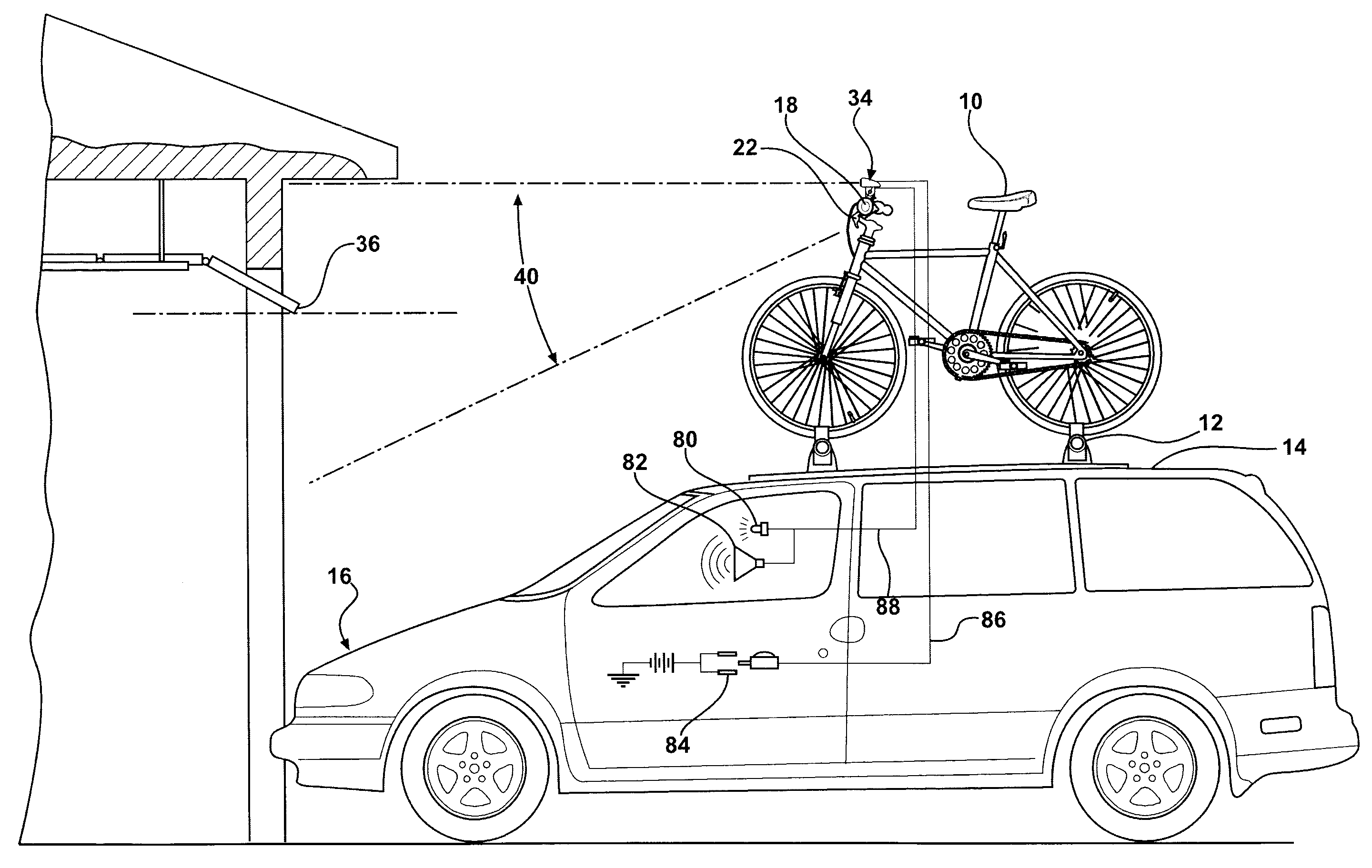Early detection system and method for exterior vehicle cargo
a detection system and cargo technology, applied in the direction of optical signals, cycle equipments, instruments, etc., can solve the problems of increasing the overhead clearance space needed, severe damage to the cargo, and the vehicle and/or the obstruction,
- Summary
- Abstract
- Description
- Claims
- Application Information
AI Technical Summary
Benefits of technology
Problems solved by technology
Method used
Image
Examples
Embodiment Construction
[0026] Referring to the Figures, wherein like numerals indicate like or corresponding parts throughout the several views, a high-profile article of cargo is generally indicated at 10 in FIG. 1. The cargo 10 is depicted in FIGS. 1 and 3 in the form of a bicycle. However, the article of cargo may be any object whatsoever that is transported on an exterior payload area of a motor vehicle. Therefore, the cargo 10 may comprise a personal watercraft, a piece of luggage, an extension ladder, a refrigerator, a cargo box, a rooftop carrier, or any other article which can be attached to the exterior of a motor vehicle for transportation purposes. The exterior payload area of the motor vehicle is illustrated in the Figures as a frame-like cargo rack 12 affixed to the rooftop 14 of a passenger vehicle 16. In FIG. 1, the cargo rack 12 is configured in the well-known “fork mount” style to carry a bicycle, whereas in FIG. 3 the cargo rack 12 is configured in the alternative “upright mount” style. ...
PUM
 Login to View More
Login to View More Abstract
Description
Claims
Application Information
 Login to View More
Login to View More - R&D
- Intellectual Property
- Life Sciences
- Materials
- Tech Scout
- Unparalleled Data Quality
- Higher Quality Content
- 60% Fewer Hallucinations
Browse by: Latest US Patents, China's latest patents, Technical Efficacy Thesaurus, Application Domain, Technology Topic, Popular Technical Reports.
© 2025 PatSnap. All rights reserved.Legal|Privacy policy|Modern Slavery Act Transparency Statement|Sitemap|About US| Contact US: help@patsnap.com



